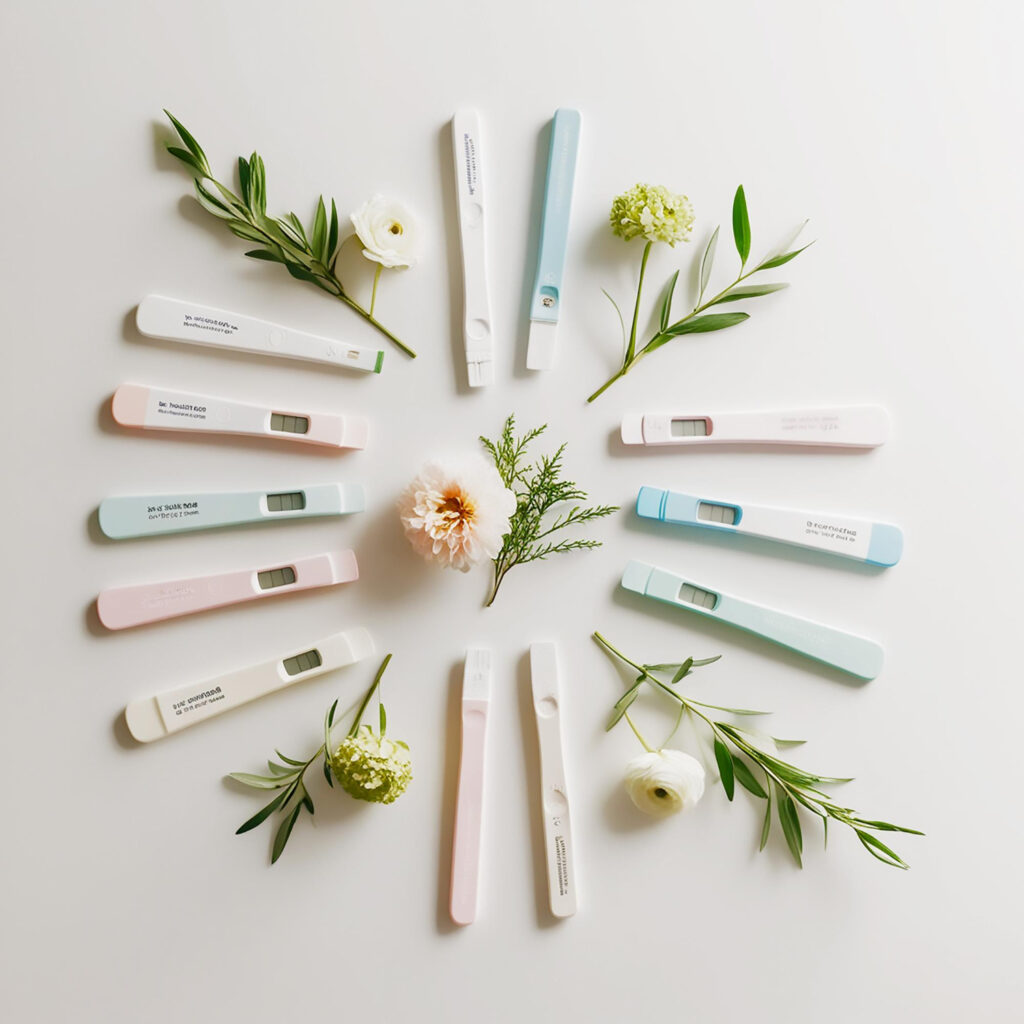Ovulation test kits or ovulation predictor kits (OPKs) are at-home tests you can use to determine when you’re ovulating. Because you’re most fertile during ovulation, the kits can help increase your chances for success when you’re trying to conceive.
Ovulation test kits work by measuring levels of luteinizing hormone (LH) in your urine. A rise in LH signals the ovary to release an egg — so when your levels reach a certain threshold, it’s safe to assume that ovulation will occur within the next 12 to 36 hours.
How do you use ovulation strips to predict your most fertile days of the month?
It’s easy: All you have to do is pee on a stick or strip (or pee in a cup and dip the stick or strip into the cup) and wait a few minutes for the indicator to appear. If the test line shows up darker than the control line, you’re about to ovulate. (There are always low levels of LH in your body, so if the test line shows up but appears lighter or fainter than the control line, you’re not ovulating yet. Using an ovulation test strip with a digital readout can eliminate this confusion.
Ovulation tends to occur about halfway through your menstrual cycle. So, it’s best to start using an ovulation predictor test a few days before your midway point. (If your cycle is 28 days, for instance, take your first test on day 10 or 11. If your cycles are irregular, use the length of your shortest cycle in the last 6 months as a guide and begin testing three to four days sooner than the midpoint of your shortest cycle.)
You might need to test for a few days to detect a surge in LH, which is totally normal. Most kits come with five to 10 test strips. If you use an ovulation test strip with a digital reader, it can compare your current hormone levels with the levels you’ve had on previous days. That can make it even easier to determine when your LH is surging.
Are there any other pointers you should consider? To get the most accurate reading, you’ll want to:
- Use an ovulation test strip between 12 p.m. and 8 p.m. Most women have a surge in LH in the morning, and those levels can be picked up in your urine about four hours later. But whether you test once or twice, aim to do it at the same time (or times) each day.
- Make sure your urine is concentrated enough. Avoid peeing for an hour or two before the test, and try not to drink large amounts of fluid.
- Follow the package directions carefully. The more closely you stick with the manufacturer’s instructions, the more likely it is you’ll get good results.
Once the test indicates that your LH levels are on the upswing, start having sex that day. Have sex for two to three days afterwards, too, since ovulation can occur within 36 hours of LH levels rising.
How accurate are ovulation test strips?
Ovulation test strips can do an excellent job of letting you know when you’re most fertile. In fact, studies suggest they can detect ovulation up to 97 percent of the time, making them the most accurate option out there.
But there are a few key things to keep in mind. Most important? Ovulation strips show whether your hormones are at the right level for ovulation. They can predict the ideal time to try to conceive, but they still don’t guarantee that conception will definitely take place.
The kits also tend to be more accurate for some women than others. Ovulation predictor kits work best for women whose cycles are relatively predictable. But they might be less reliable if you:
- Have very irregular periods. Irregular cycles can make it tough to figure out when you’re due to start ovulating. That can increase the chances of using an ovulation predictor kit too early or too late and missing the ovulation window altogether.
- Have a health condition like PCOS. Women with polycystic ovary syndrome (PCOS) experience multiple LH surges each month, but ovulation doesn’t occur with every surge. That could make test results unreliable.
- Are you taking certain medications? Fertility drugs, hormones (like birth control pills) and antibiotics can all make ovulation test strips inaccurate.
How much do ovulation test strips cost, and are they covered by insurance?
Prices vary based on factors like brand, the number of strips in the kit and whether the test has a digital reader.
You can expect to pay a little more for ovulation test kits or ovulation predictor kits with digital readers — between $32 and $52. The tests may be available for reimbursement with a flexible spending account, health savings account or health reimbursement arrangement.

